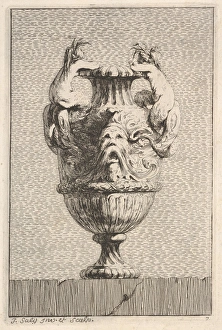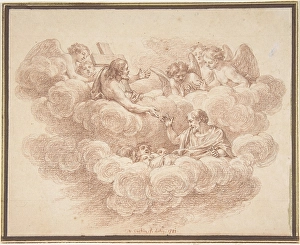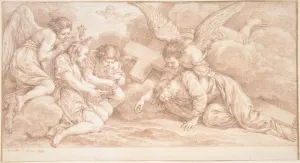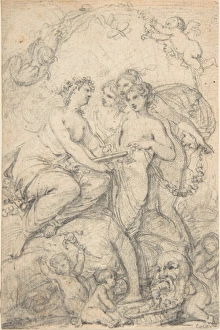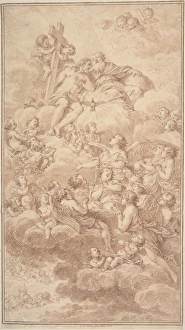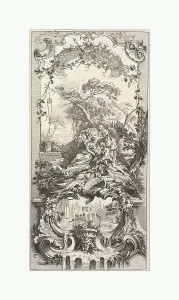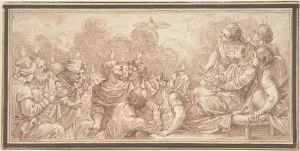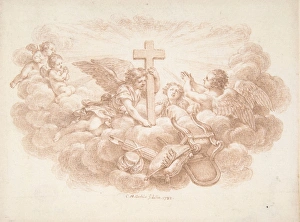1715–1790 Collection
"Exploring the Artistic Tapestry of 1715–1790: A Captivating Journey through History" Step into the captivating world of 1715–1790
All Professionally Made to Order for Quick Shipping
"Exploring the Artistic Tapestry of 1715–1790: A Captivating Journey through History" Step into the captivating world of 1715–1790, a period marked by artistic brilliance and cultural transformation. Delve into the depths of this era as we unravel its hidden gems, from remarkable sculptures to breathtaking illustrations. One such masterpiece is "Rape Sabine Women, " created in 1781. With red chalk traces on black paper, this artwork depicts a powerful narrative that explores themes of conflict and unity. Its striking imagery leaves an indelible impression on all who behold it. Moving on to vases set against wall monuments, we encounter the stunning "Statue Louis XV" from 1746. This exquisite piece showcases intricate details and craftsmanship that embody the opulence of the time. It stands as a testament to King Louis XV's reign and his influence on art during this period. Intriguingly, another work titled "Risen Christ Appearing Souls Purgatory" (1782) captures our attention with its use of red chalk. The artist skillfully portrays a scene filled with spiritual significance and contemplation, inviting viewers to ponder life beyond earthly realms. Equally mesmerizing is "Christ Falling under Cross" (1782), framed by delicate lines drawn in red chalk. This evocative depiction transports us back in time, allowing us to witness Christ's journey towards salvation through poignant strokes. Amongst these masterpieces lies a graphite bust dating back to 1776 – a profiled man gazes leftward with an air of mystery surrounding him. Measuring at just over four inches in diameter, this small yet impactful creation reveals glimpses into society's fascination with portraiture during this era. A contrasting perspective emerges when encountering another portrait – one showcasing a man looking rightwards using black chalk techniques measuring three-and-a-half inches by four inches approximately. This enigmatic portrayal leaves us wondering about the story behind this intriguing figure.

